Complete Solutions to Photosynthesis In Higher Plants of chapter PHOTOSYNTHESIS IN HIGHER PLANTS of Class 11 book with complete answers and questions
| Class 11 | BIOLOGY |
| Chapter | PHOTOSYNTHESIS IN HIGHER PLANTS |
| NCERT FINGERTIPS | Photosynthesis In Higher Plants |
| Number Of Questions | 100 |
| Academic Year | 2023-24 |
Synthesis of complex organic substances from simple inorganic raw materials in the presence of sunlight and chlorophyll is called as ___ which is a ___ process.
02:08View SolutionWhich of the following correctly depicts the biochemical reaction for photosynthesis?
01:02View SolutionMoll's half-leaf experiment proves that___ is essential for photosynthesis to take place
03:09View SolutionWho demonstrated that green plants purify the foul air produced by breathing animals and burning candles?
02:24View SolutionWhich of the following scientists concluded by his experiments that green plant parts play a role in purifying the noxious air only in the pressure of sunlight?
01:55View SolutionIngenhousz in an experiment showed that in bright sunlight, samall bubbles were formed around the green parts of the plant, while in the dar, they did not. He identified these bubbles to be of
02:03View SolutionWho provided the evidence that glucose is formed during photosynthesis and is then stored in the form of starchgt?
02:18View SolutionWho used prism, green alga Cladophora and aerobic bacteria and plotted the first action spectrum of photosynthesis?
02:25View SolutionWho, after conducting experiments on purple and green sulphur bacteria, inferred that `O_(2)` evolved during photosynthesis comes from `H_(2)O` not from `CO_(2)`?
01:44View SolutionWhich one of the following equation suggests that `O_(2)` released during photosynthesis comes from water?
01:17View SolutionIf green plant cells are incubated with `O^(18)`- labelled water, which of the following molecuels will become radioactive when the cells are exposed to light?
00:53View SolutionDuring high light intensity, the chloroplasts align themselves
03:14View SolutionSelect the correct match.
00:52View SolutionPhotosynthetic pigments such as chl a, chl b, xanthophyll and carotene can be separated by which of the following techniques?
02:40View SolutionChlrophyll a apeers ____ in colour and chlorophyll b appears____ in colour in the chromatogram.
01:20View SolutionStudy the following statements regarding chl a molecule.
(i) Molecular formula of chl a is `C_(55)H_(72)O_(5)N_(4)Mg`.
(ii) It si the primary photosynthetic pigment.
(iii) In pure state, it is red in colour and thus it absorbs more blue wavelength of light than the red wavelength.
(iv) It is soluble in water as well as pertroleum ether. Which of the above statements is/are not correct02:05View SolutionRed colour of tomatoes, carrots and chillies is due to the presence of a type of carotene pigment called as
01:03View SolutionYellowish colour of autumn foliage is due to the presence of a type of xanthophyll pigment called as
01:53View SolutionWhich of these is a type of phycobilin pigments?
01:49View SolutionVisible part of electromagnetic spectrun consists of radiations having a wavelength in the range of
01:18View SolutionIndigo and red regions of VIBGYOR, respectively fall in the range of wavelenght
02:00View SolutionAbsorption spectrum of 'chl a' shows maximum absorption in ____ and ____ regions of light
01:22View SolutionGiven graph represents the absorption specra of three photosynthetic pigments chl a, chl b and `beta`-carotene.

Select the correct statement regarding this.02:45View SolutionStudy the following statements.
(i) Red light falling in the ragne of wavelength 660-760nm is the most effective for photosynthesis.
(ii) Green light falling in the range of wavelength 500-580 nm is the least effective for photosynthesis.
(iii) Chl a,chl b carotenses and xanthophylls are soluble in organic solvents.
(iv) Phycobilins (phycocyanin, allophycocynin and phycoerythrin) are soluble in water
Which of the above statements is/are incorrect?03:42View SolutionAccessory photosynthetic pigments in most green plants are
02:21View SolutionConsider the above given figure and select the option that can be best concluded from it.
 02:53View Solution
02:53View SolutionWhich of the following is produced during the light phase of photosynthesis?
02:17View SolutionPhotochemical phase does not include
02:00View SolutionGiven figure depicts the light harvesting comples (LHC) of photosystem I (PS I)
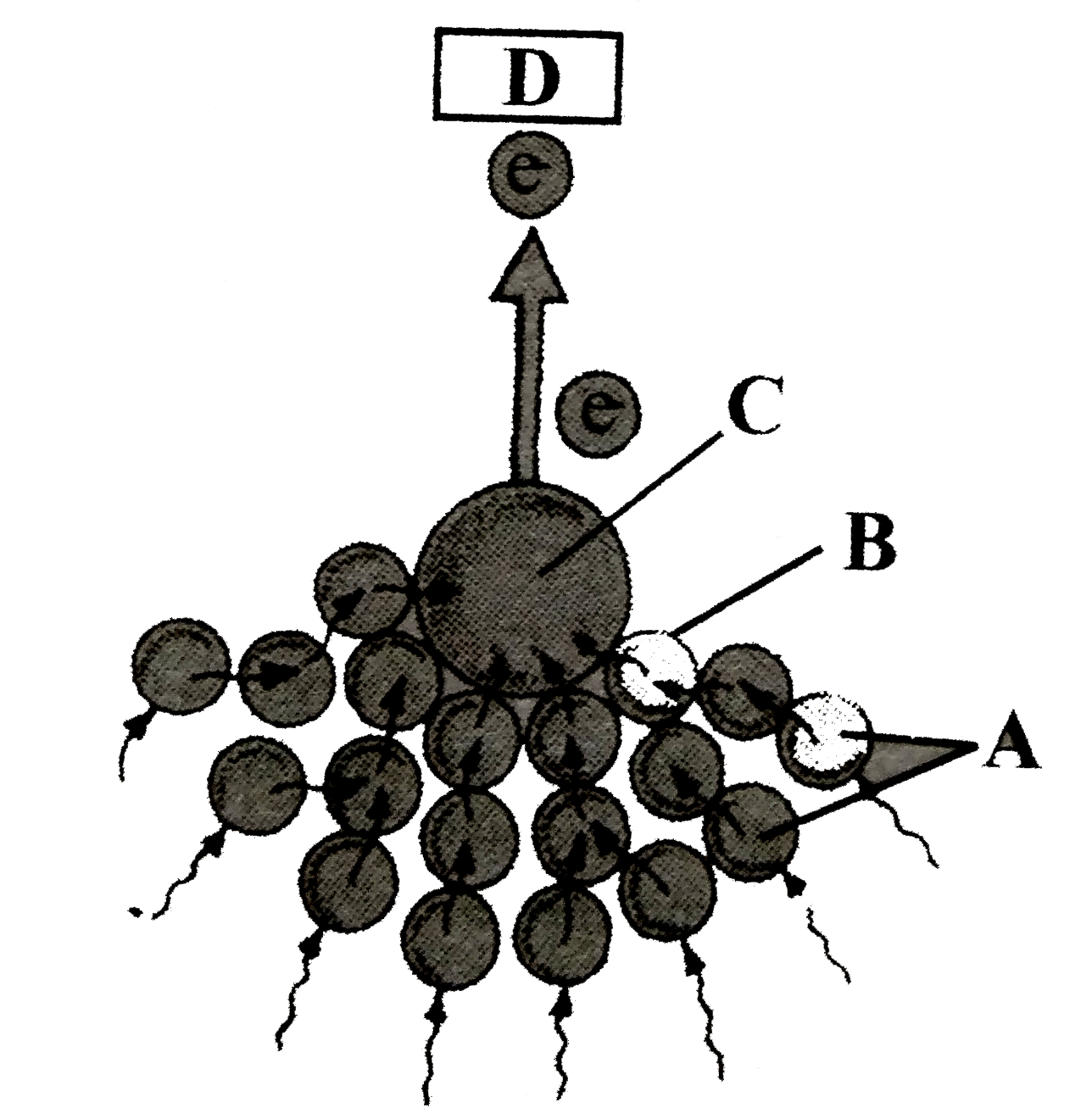
Select the correct identification for A,B,C and D02:04View SolutionReaction centre of PS I is ____ and reaction centre of PS II is___
02:25View SolutionIn PS I, the reaction centre chl a has absorption maxima at____whereas in PS II, the reaction centre Chl a has absorption maxima at ___
02:55View SolutionIdentify A,B,C,D and E in the given flow chart showing Z-Scheme of light reaction.
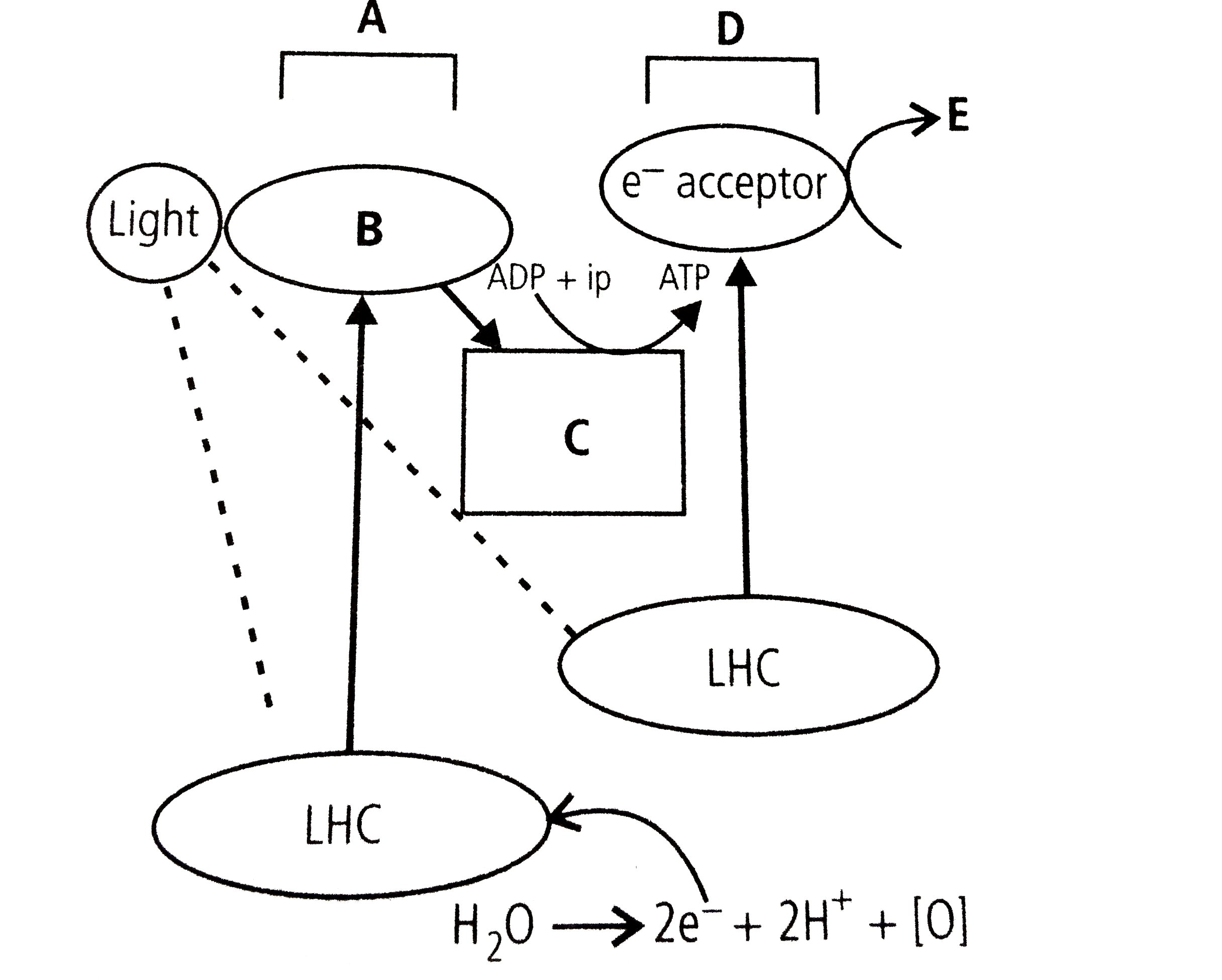 02:40View Solution
02:40View SolutionThe biochemical objective of PS I is to
03:09View SolutionWhich one is involved in Z-scheme of photosynthesis?
02:40View SolutionFor NADPH + `H^(+)` formation
03:03View SolutionWhich of the following is/are formed during Z-scheme of photophosphorylation?
04:16View SolutionThe Z scheme of photophosphorylation follows the following sequence.

Which of the following option is correct for A,B,C and D tranfer of electrons?02:51View SolutionDuring Z scheme, electrons excited by absorption of light if PS I are transferred to the primary acceptors, and tehrefore must bereplaced. The replacements come directly form
02:39View SolutionRefer to the given reaction.
`2H_(2)Orarr4H^(+)+O_(2)+4e^(-)`
Where does this reaction take place in the chloroplasts of plants?02:01View SolutionWhich one of the following ions is essential for photolysis of water?
01:42View SolutionDuring photocatalytic splitting of water, liberation of `O_(2)` requires
01:44View Solution____ is the process of synthesis of ATP from ADP and Pi in the presence of light.
02:11View SolutionWhat does the given diagram represent with respect to the various photosynthetic process?
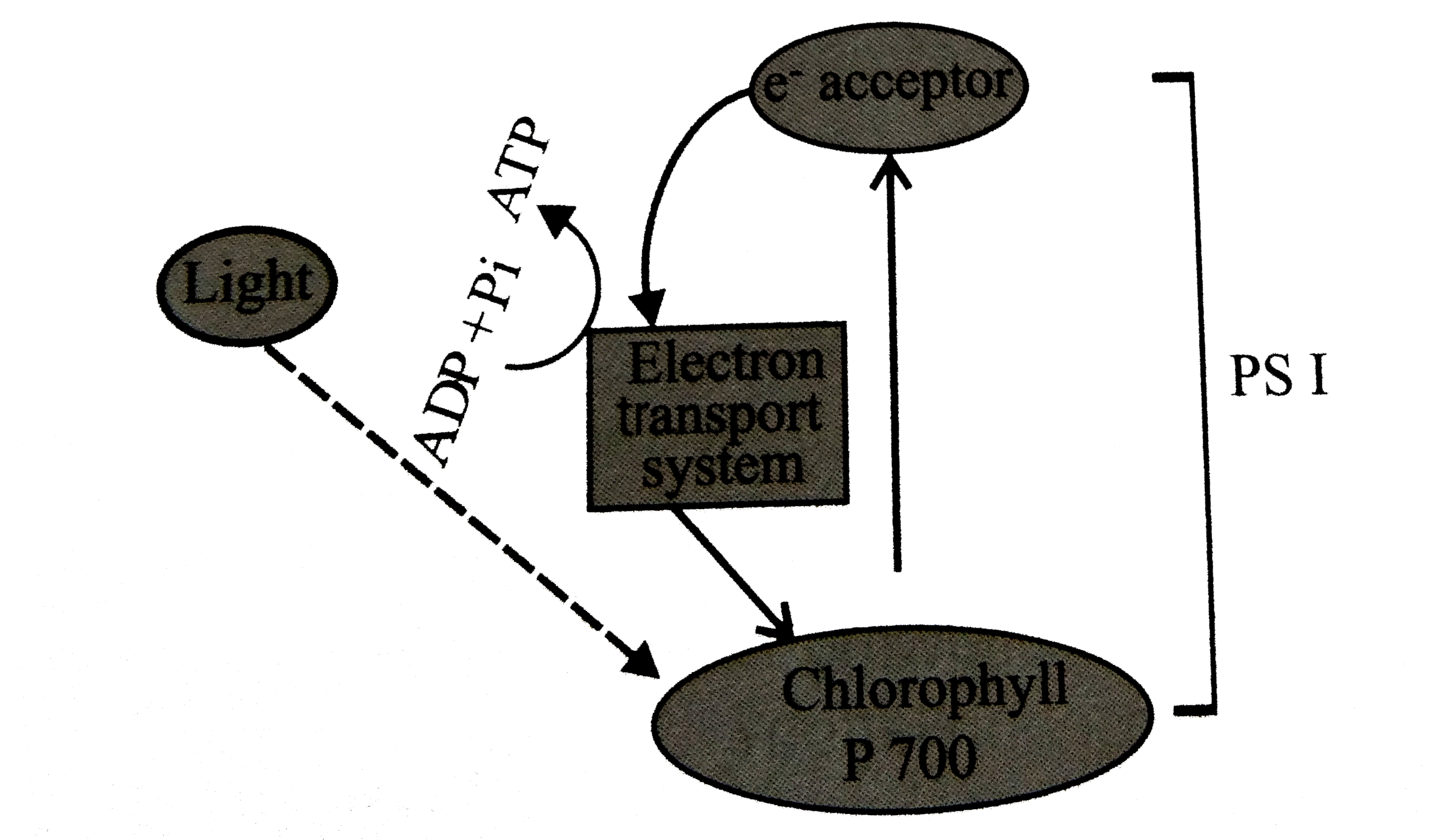 01:56View Solution
01:56View SolutionPS II is located on
01:29View SolutionRead the following statements and selct the correct ones.
(i) PS I is involved in non-cyclic photophosphroylation only.
(ii) PS II is involved in both cyclic and non-cyclic photophosphorylation.
(iii) Stoma lamellae membranes possess PS I only whereas grana lamellae membranes possess both PS I and PS II.02:59View SolutionStudy the given flow chart of cyclic photophosphorylation and selct the correct answer for A,B and C
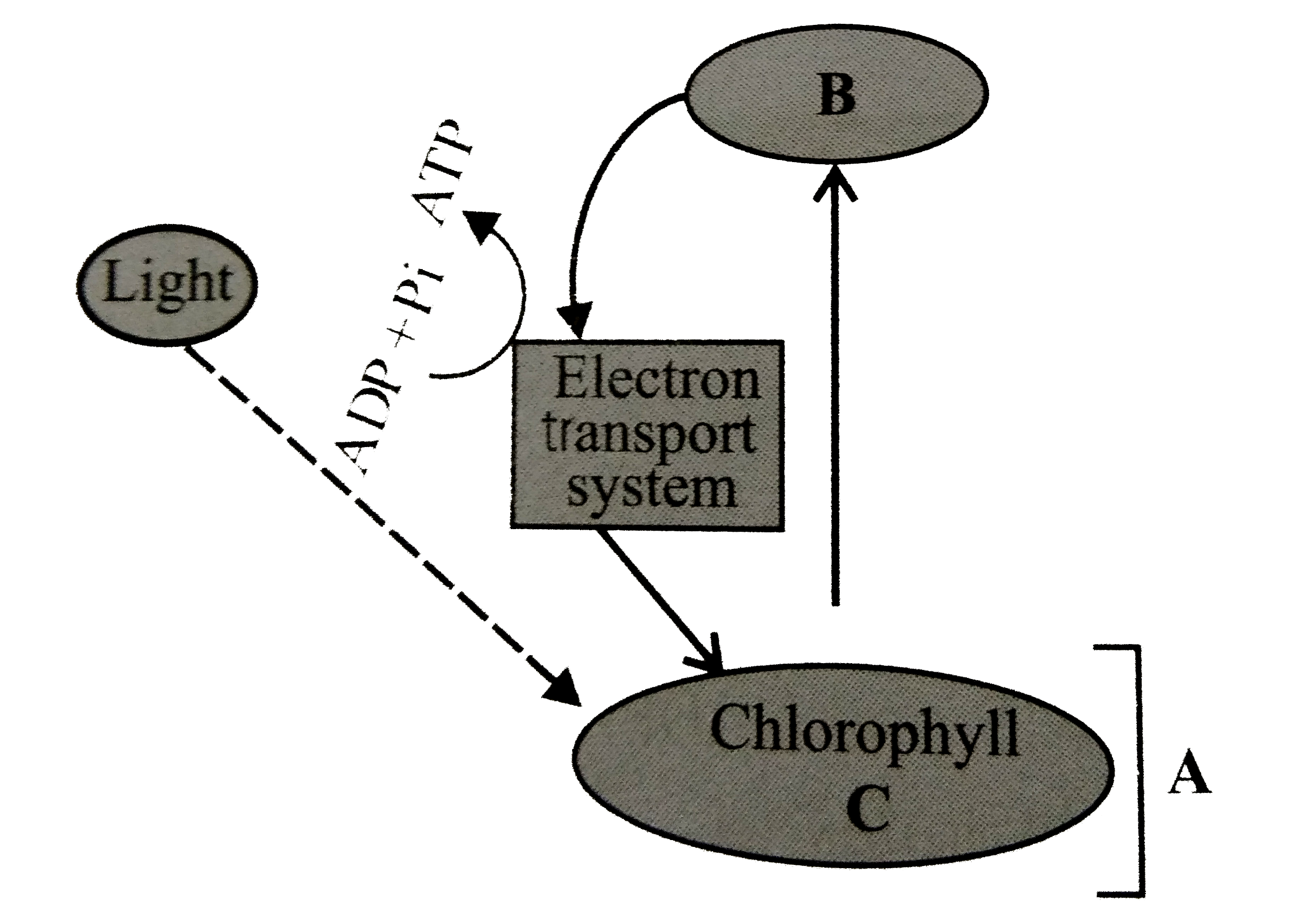 01:25View Solution
01:25View SolutionIn cyclic photophosphorylation, the electron released by reaction centre `(P_(700))` is ultimately accepted by
01:33View SolutionDuring non-cyclic photophosphorylation, electrons are continuously lost from the reaction centre of PS II. Which source is used to replace these electrons?
01:27View SolutionRead the given statements and select the correct option.
Statement 1: in photosyntheis, during ATP synthesis, protons accumulate in the lumen of thylakoid.
statement 2: In respiration, during AtP synthesis protons accumulate in the intermembranal space of mitochondria.03:20View SolutionAssume a thylakoid which is somehow punctured so that the interior of the thylakoid is no longer separated from the stroma. This damage will have the most direct effect on which of the following processes?
02:05View SolutionIdentify the parts marked as A,B and C in the given figure showing ATP synthesis thorugh chemiosmosis.
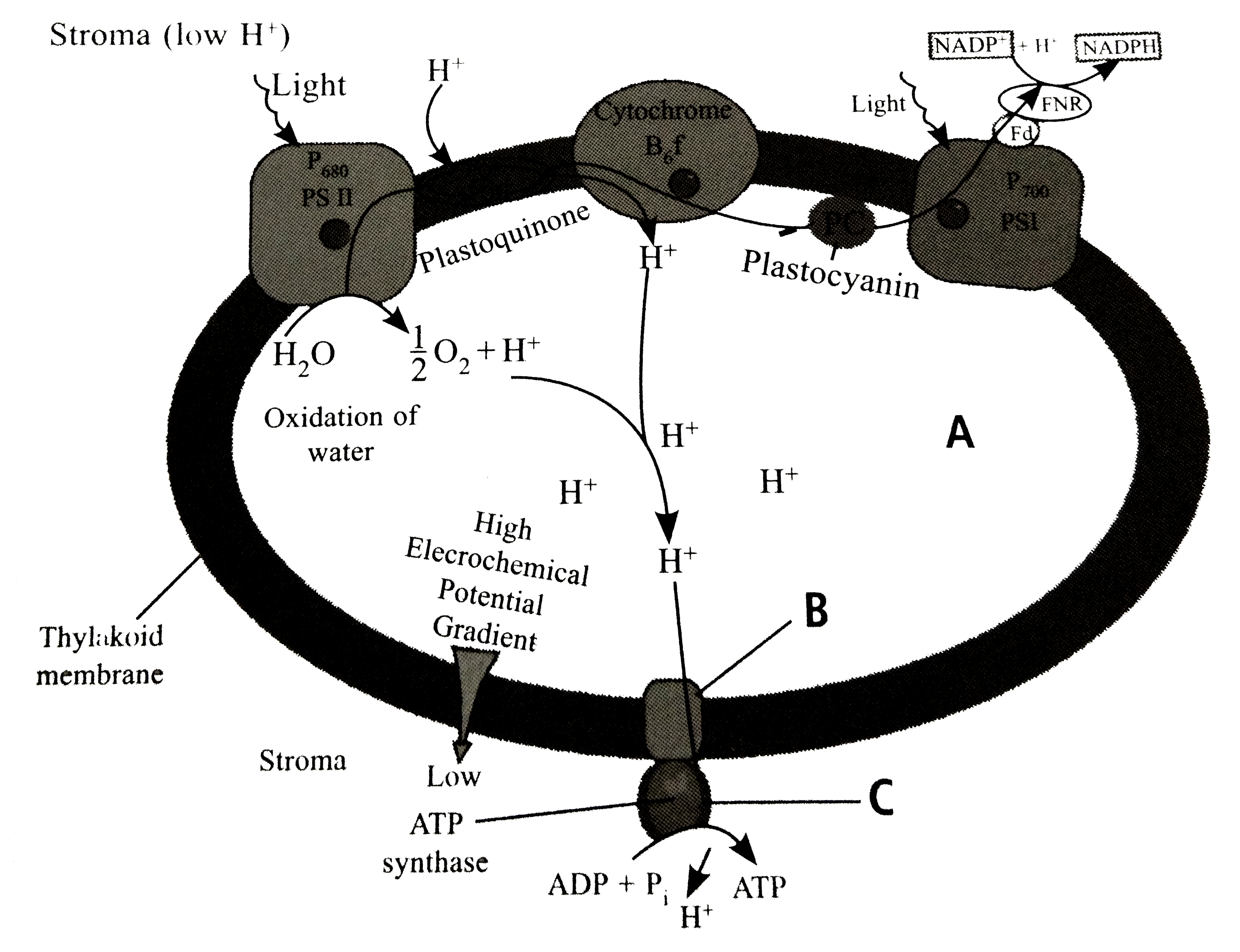 02:06View Solution
02:06View SolutionBreaddonw of proton gradient developed during chemiosmosis leads to the release of
01:41View SolutionDuring chemiosomotic synthesis of ATP, protons diffuse through `CF_(0)` channels that activates ATPase enzyme As a result, one molecule of ATP is formed when___passes thorugh ATPase.
01:41View SolutionThe herbicide DCMU kills the weeds because it inhibits
02:11View SolutionWhich of the following statements about dark reactions is correct?
01:54View SolutionFollowing table summarises the differences between light reactions and dark reactions.

Which of the above paris of difference is/are incorrect?03:40View SolutionIf green plant cells are incubated with `O^(18)`labelled `CO_(2)`. Which of the following molecules will become radioactive when the cells are exposed to light?
01:27View SolutionRefer to the given diagrammatic representation of an electron micrograph of a section of chloroplast and answer the
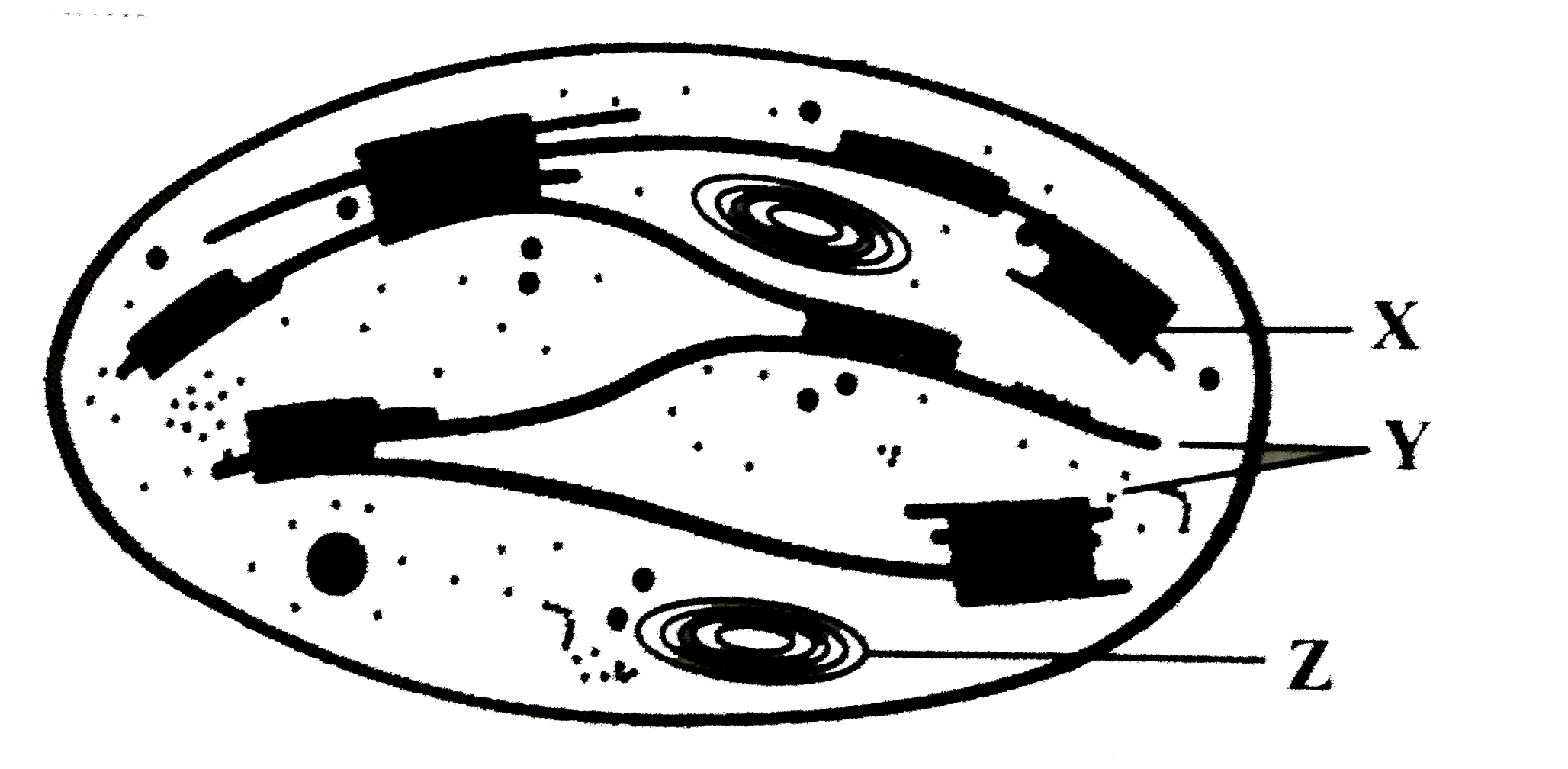 Select the option that correct identifes X,Y and Z.02:03View Solution
Select the option that correct identifes X,Y and Z.02:03View SolutionRefer to the given diagrammatic representation of an electron micrograph of a section of chloroplast and answer the
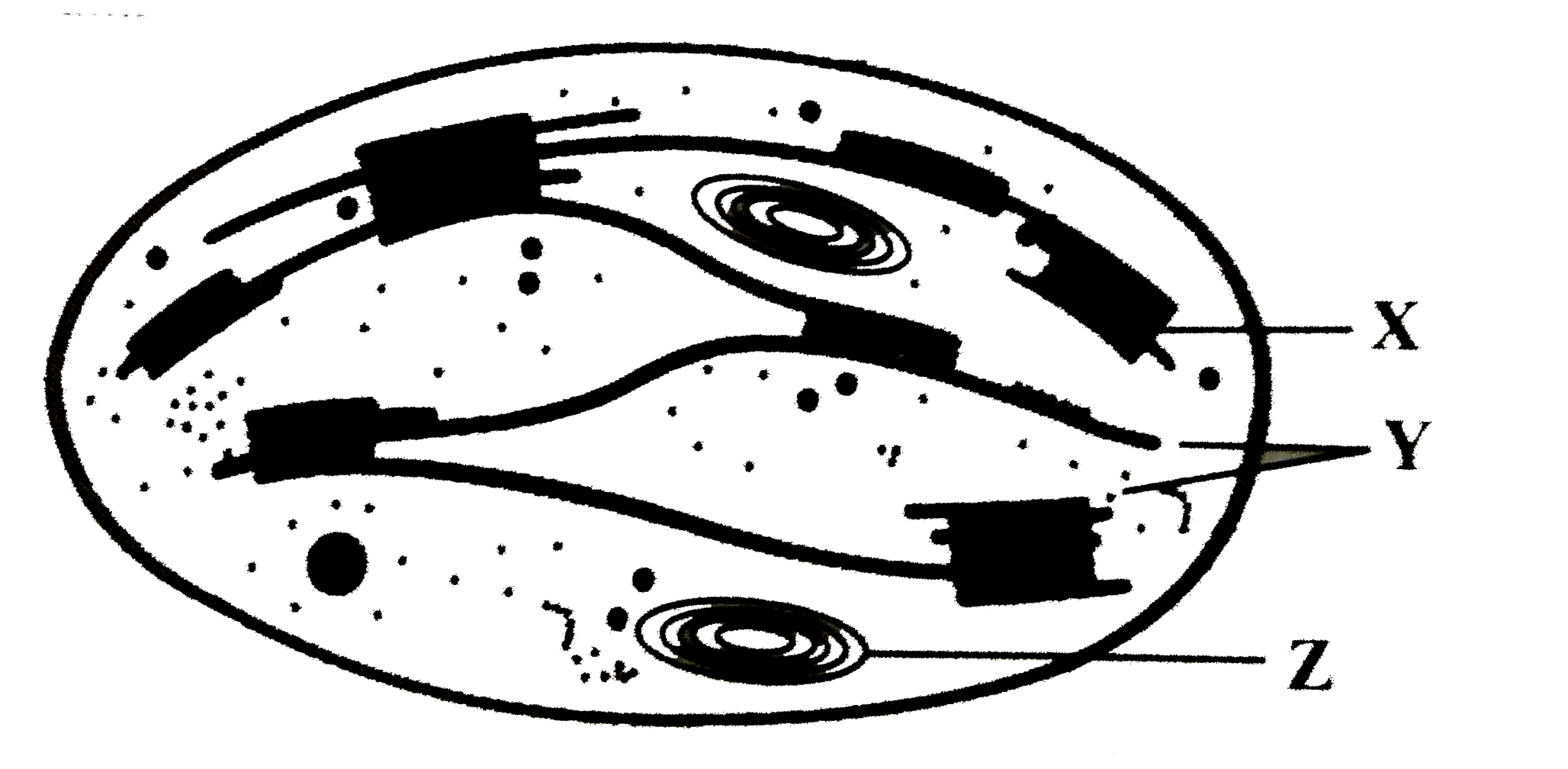
Select the option which correctly depicts the functions of parts X,Y and Z02:31View SolutionIn the given representation of Calvin cycle, identify A, B and C and slect the correct option.
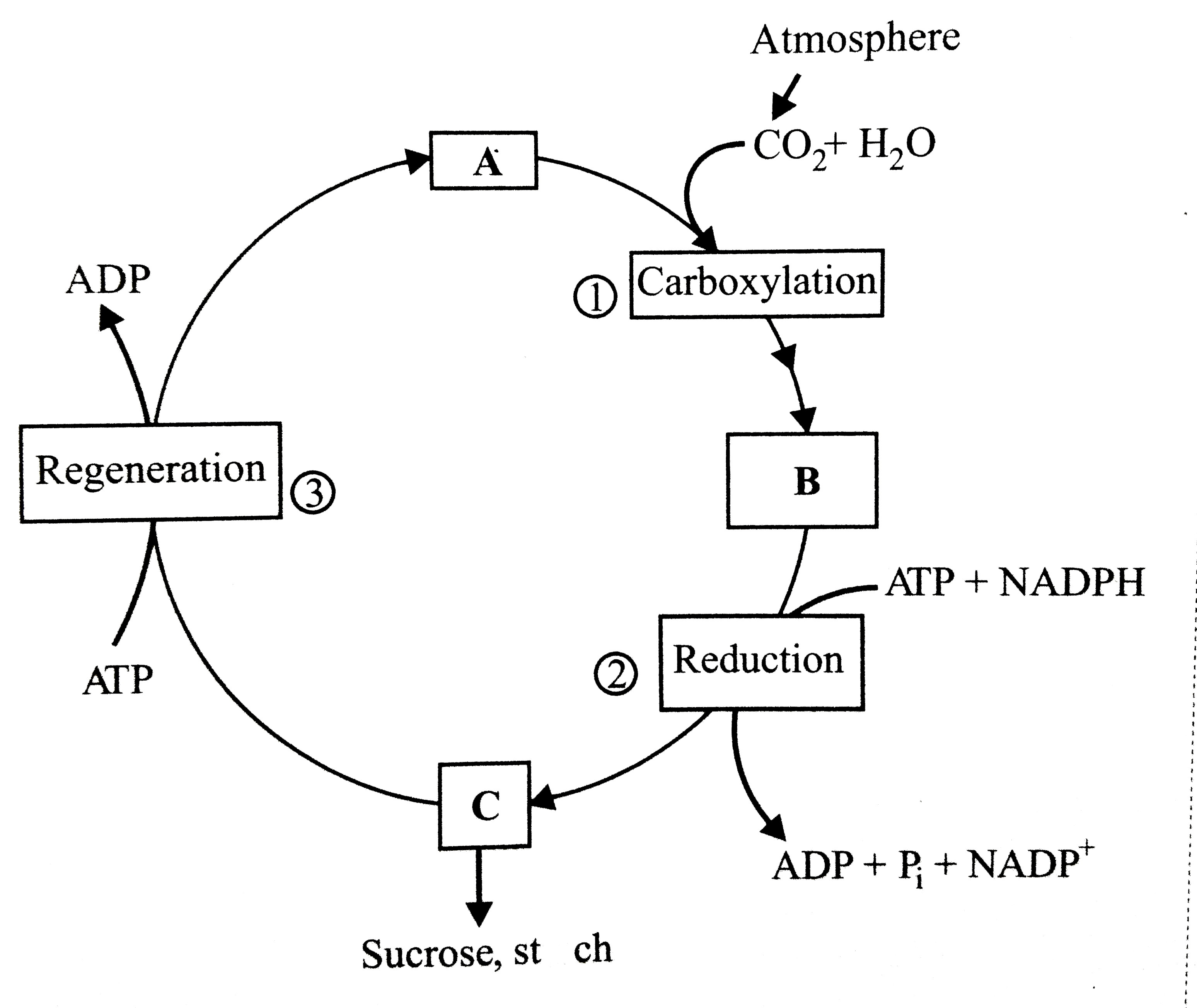 03:58View Solution
03:58View SolutionRead the given statements and select the correct option.
Statement 1 : Carboxylation is the most crucial step of Calvin cycle where `CO_(2)` is utilised for the carboxylation of RuBP.
Statement 2: Carboxylation is catalysed by the enzyme RuBis CO which results in the formation of two molecules of 3PGA.03:12View SolutionIdentify the correct sequence of stages of Calvin cycle.
01:47View Solution`CO_(2)` combines with RuBP in the presence of enzyme RuBisco to from 3PGA This process of Calvin cycle is included under
03:04View SolutionRuBisCO is
02:14View SolutionGlucose synthesis occurs during which stage of `C_(3)` cycle?
02:30View SolutionDuring fixation of one molecule of `CO_(2)` by `C_(3)` plants, number of ATP and NADPH_(2)` required are
02:56View SolutionHow many ATP and NADPH molecuels are respectively required to mae one molecule of glucose through Calvin cycle?
02:17View SolutionHow many number of `CO_(2)` molecules are required to synthesise one molecule of glucose during `C_(3)` cycle?
01:15View SolutionWhich of the following statements is incorrect regarding the Calvin cycle of `C_(3)` plants?
01:48View SolutionKranz anatomy is not exhibited by which of the following plants?
02:01View SolutionSelect the incorrect statement as far as kranz anatomy is concerned.
02:13View SolutionDuring Hatch and stack pathway, PEP combines with `CO_(2)` in the presence of enzyme PEPCae, to form OA A. This process of initial fixation of `CO_(2)` occurs in
02:55View SolutionConsider following statements with respect to the Ca pathway and select the correct ones.
(i) Mesophyll cells possess both RuBisCO and PEPcase enzymes.
(ii) Initial `CO_(2)` fixation occurs in mesophyll cells.
(iii) Final `CO_(2)` fixation occurs in bundle sheath cells.03:23View SolutionIn `C_(4)` plants, Calvin cycle enzymes are present in
02:25View SolutionSelect the correct statement regarding the first stable product formed in Hatch and slack pathway in `C_(4)` plants.
02:39View SolutionGiven figure represents `C_(4)` pathway. Select the suitable options for A,B and C.
 02:06View Solution
02:06View SolutionWhich kind of cells are represented by letter P and Q in the given figure showing `C_(4)` pathway?
 02:04View Solution
02:04View SolutionIn an experiment in which photosynthesis is perforemd during the day. You provide a plant with radioactive carbon dioxide `(.^(14)CO_(2))` as a metabolic tracer. The `.^(14)C` is incorporated first into oxaloacetic acid. The plant is best characterised as a
01:06View SolutionSelect the incorrect pair.
01:56View SolutionOptimum temperature conditions for photosynthesis in `C_(3)` and `C_(4)` plants are respectively
01:39View SolutionRead the given statements and select the correct option.
Statement 1: Crassulacean acid metabolism occurs in succulent plants which grow in xeric conditions.
Statement 2: Stomata are generally sunken in succulent plants.02:27View SolutionMathc column I with column II and selct the correct option from the given codes.
`{:("Column I","Column II"),(C_(3)"Plants",(i)"Kalanchoe,Opuntia"),(C_(4)"plants",(ii)"Maize,sugarcane"),(C_(4)"plants",(iii)"Maize,sugarcane"):}`01:26View SolutionMathc column I with column II and select the correct option from the given codes.
`{:("column I","column II"),(C_(4)"plants",(i)"Succulents"),("Chlorophyll b",(ii)"Accessory photosynthetic pigment"),("PS II",(iii)"Photoxidation of" H_(2)O),("CAM",(iv)"Kranz anatomy"):}`02:19View SolutionThe enzyme RuBisCO has
01:31View SolutionRefer to the given reaction.
`RuBP+O_(2)underset("oxygenase")overset("RuBP")rarr"Phosphoglyceric acid"+"Phosphoglycolic acid"`
It is the first reaction of02:03View SolutionRead the given statements and selct the correct option.
Statement 1: Photorespiration interferes with the successful functioning of Calvin cycle.
Statement 2: Photorespiration oxidises ribulose-1,5 biphosphate which is an acceptor of `CO_(2)` in Calvin cycle.03:11View SolutionHow may ATP and `NADPH_(2)` are respectively produced in the process of photorespiration?
02:21View SolutionDuring `C_(2)` cycle, there occurs
02:54View SolutionWhich organelle out of these does not participate in photorespiration?
01:20View SolutionThe law of limiting factors was given by ___ in the year___
01:12View SolutionStudy the given graph showing the efect of light intensity on the rate of photosynthesis. Which of the following statemetns regarding this is correct?
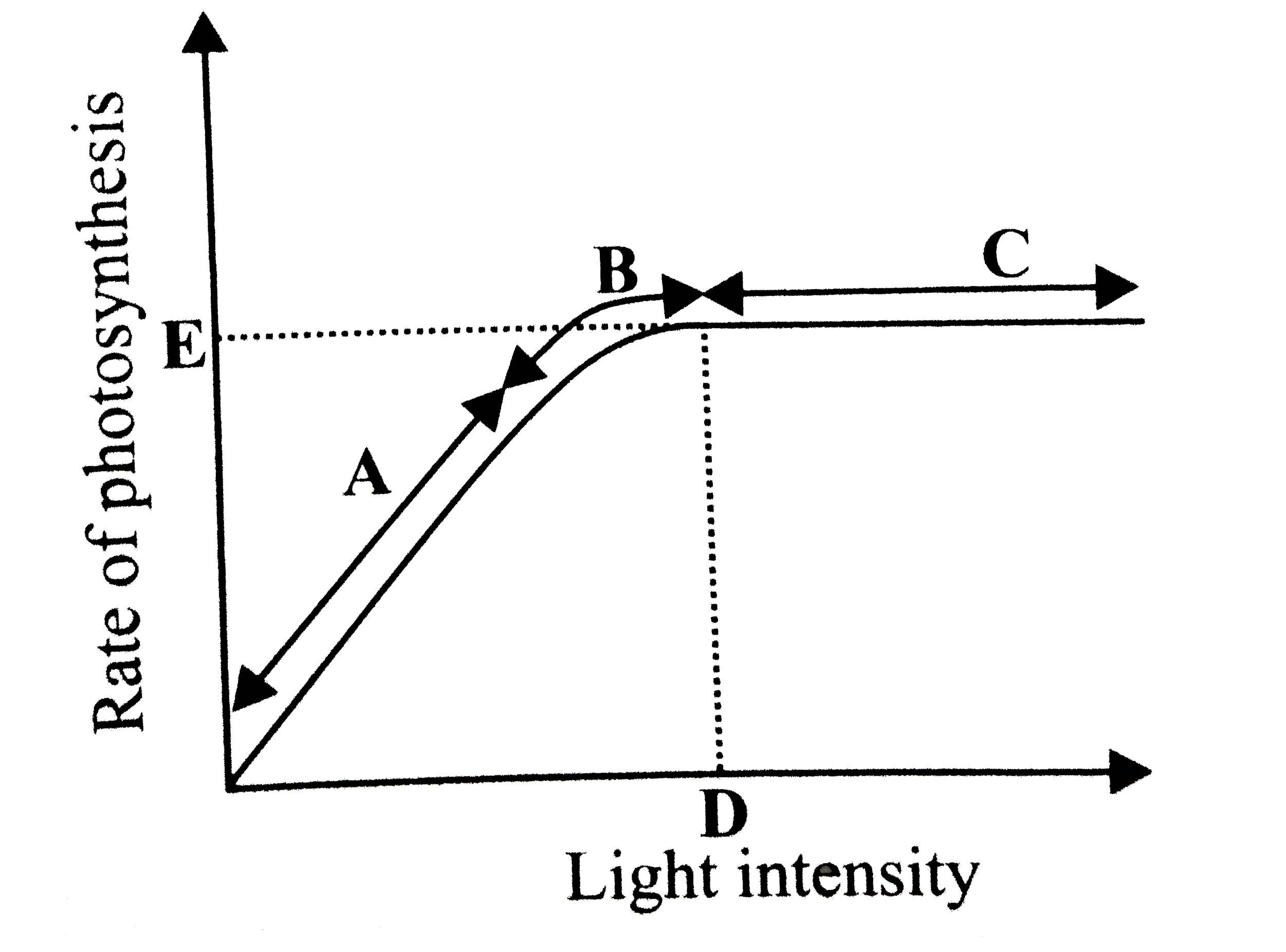 03:56View Solution
03:56View SolutionQuality of light refers to
02:01View SolutionGiven table shows the `CO_(2)` compensation point and optimum `CO_(2)` concentration for photosynthesis for `C_(3)` and `C_(4)` plants.
`|(ul(" " C_(3) " Plants" " " C_(4)" Plants")),(ul(underset("point")(CO_(2)" compensation")" "25-100 "ppm" " "A " ")),(ul(underset("cocentration")("Optimum " Co_(2)) " " "B 360 ppm"))|`
Select the correct values for A and B.04:08View SolutionA point at which illuminated plant parts stop absorbing `CO_(2)` from their enviroment, is known as
02:36View SolutionWhen temperature is increased from minimum to optimum, rate of phosynthesis doubles for every ____ rise in temperature.
01:28View SolutionTropical plants have a ___ temperature optimum than the plants adapted to temperate climates.
01:33View SolutionWarbung effect refers to
02:15View SolutionWhich of the following factors, besides being one of the reactants in the process of photosynthesis, indirectly affects its rate?
02:29View SolutionWhich of the following is not an external factor influencing photosythesid?
02:16View SolutionThe factor which is not limiting in normal conditions for photosynthesis is
01:19View Solution
Photosynthesis In Higher Plants questions and complete solutions for chapter PHOTOSYNTHESIS IN HIGHER PLANTS of MTG BIOLOGY (HINGLISH) of Class 11
